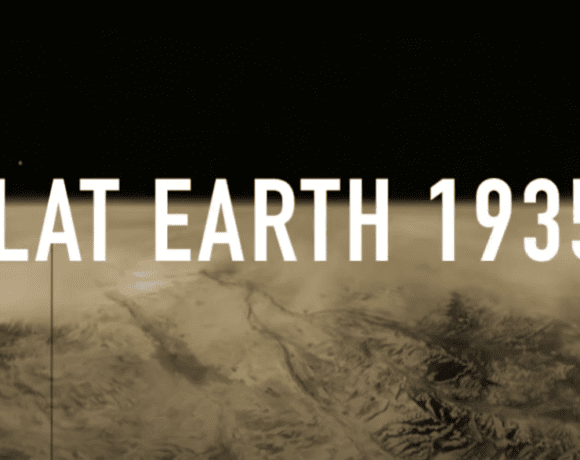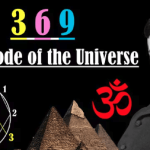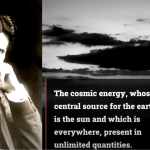Introduction to Alternative Earth Cosmologies
Throughout history, various alternative Earth cosmologies have been the subject of debate and fascination among scholars, scientists, and enthusiasts alike. While some adhere to the Flat Earth Theory, arguing that our planet is a level plane devoid of curvature, others hold the belief that we live on a convex sphere, the traditional globe model. However, a lesser-known and equally contentious model is the Concave Earth Theory, which proposes that Earth is a concave sphere and we live on its inner surface.
In this comprehensive article and the accompanying video, we will delve into the Concave Earth Theory, systematically debunking its claims using scientific evidence and reasoning. We highly recommend watching the video for a more immersive and visual experience of the arguments presented.
The Physics of Water and the Horizon
One of the most compelling pieces of evidence against the Concave Earth Theory is the natural physics of large bodies of water. Water, in its natural state, seeks its lowest level, with the surface remaining perfectly flat from one end to the other within its container. This tangible substance cannot support itself in any shape, no matter the form of the ground beneath it. This fact alone dismantles the notion that Earth is a concave or convex sphere.
Furthermore, the perfectly flat horizon visible for hundreds of miles at the highest altitudes attainable by amateur balloons, cameras, or humans demonstrates that Earth is neither concave nor convex. For Earth to be a sphere of the dimensions claimed, it must curve (upwards or downwards) at a specific rate, which can be calculated using the formula h = r – r cos(s/2r), where h = height, r = radius, and s = arc length. Simplified for practical observation, the formula equates to 7.98 inches per mile squared, resulting in a visible and measurable curvature of 6 feet after 3 miles, 24 feet after 6 miles, 54 feet after 9 miles, and so on.
Experiments Debunking Concave Earth Theory
Numerous experiments have been conducted to confirm or refute the existence of this alleged curvature. Using tools such as lasers, spirit levels, theodolites, sextants, telescopes, super-zoom cameras, and Navy rail guns, researchers have consistently found that no such curvature exists. These results further strengthen the argument against the Concave Earth Theory and, by extension, the Convex Earth Theory as well.
The Role of Gravity in Earth’s Shape
Another argument against the Concave Earth Theory lies in our understanding of gravity. The force of gravity pulls objects towards the center of mass, which in the case of Earth, would be its core. If the Earth were indeed concave, gravity would cause objects to be pulled towards the center, making it impossible for us to inhabit the inner surface.
Geodetic Surveys and Satellite Images
Geodetic surveys, which involve the study and measurement of Earth’s shape, size, and gravitational field, have provided ample evidence for a convex Earth. These surveys use advanced techniques and tools like GPS, satellite imaging, and precise measurements to determine Earth’s dimensions and curvature. The data gathered from these surveys consistently align with the widely-accepted spherical Earth model.
Additionally, satellite images taken by various space agencies have consistently shown Earth to be a roughly spherical object. These images, captured by satellites orbiting our planet, provide a bird’s-eye view of Earth’s surface and curvature, further debunking the Concave Earth Theory.
The Role of Atmospheric Refraction
Atmospheric refraction, the bending of light as it passes through Earth’s atmosphere, can cause the horizon to appear flat even when viewed from great heights. This phenomenon occurs because the density of Earth’s atmosphere changes with altitude, causing light to travel in curved paths. As a result, the flat appearance of the horizon is not definitive proof of a level Earth.
Tectonic Plate Movement and Seismic Activity
The Concave Earth Theory also fails to account for the observed movement of tectonic plates and seismic activity. If Earth were concave, the mechanisms behind these natural phenomena would be vastly different from those observed and understood by scientists. The study of plate tectonics, earthquake patterns, and volcanic activity all support a spherical Earth model.
The Coriolis Effect and Earth’s Rotation
The Coriolis effect, which causes the apparent deflection of moving objects due to the Earth’s rotation, provides further evidence against a concave Earth. This effect influences large-scale weather patterns and the rotation of cyclones, with storms in the Northern Hemisphere rotating counterclockwise and those in the Southern Hemisphere rotating clockwise. The Coriolis effect is a direct result of Earth’s rotation and would not occur in a concave Earth model.
Celestial Observations
Astronomical observations also contradict the Concave Earth Theory. The visible movement of celestial bodies, such as the Sun, Moon, and stars, aligns with a spherical Earth model. Additionally, the changing positions of constellations in the night sky as one moves toward the poles provide further evidence for Earth’s spherical shape.
Circumnavigation and Airplane Travel
The ability to circumnavigate the Earth, both by sea and air, also supports the idea of a spherical Earth. In a concave Earth model, circumnavigation would be impossible due to the inward curvature of the planet. However, countless successful journeys around the globe have been documented throughout history, providing clear evidence against a concave Earth.
In Conclusion
In conclusion, the Concave Earth Theory is simply not supported by observable evidence and is therefore unfounded. The natural physics of water, the perfectly flat horizon seen for hundreds of miles at high altitudes, countless experiments, and numerous other scientific findings all prove beyond any reasonable doubt that Earth is not concave. We highly encourage you to watch the accompanying video, which provides a detailed visual representation of these arguments, further debunking the Concave Earth Theory.




















